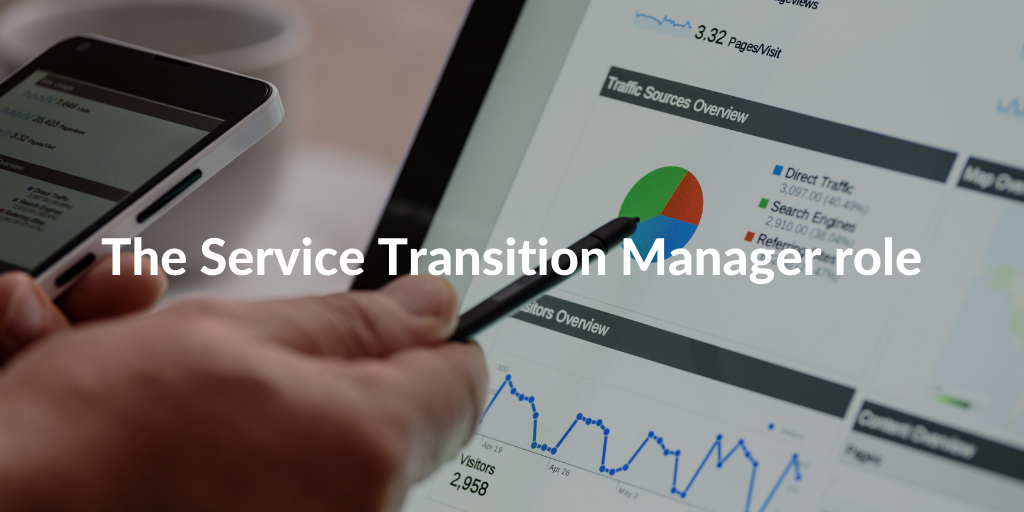With the adoption of the ITIL 4 framework, the concept of a service life cycle on which ITIL v3 was based has been replaced by a more holistic approach. The processes in ITIL 4 have been replaced by 34 practices.
This change has given organisations more freedom to define tailored Service Transition processes.
The Service Transition Manager is responsible for planning service transactions for operational use and coordinating the necessary resources. He/she must oversee and control all changes to a product’s lifecycle so that changes are made with minimal impact on IT services.
In particular, a Service Transition Manager must approve products, determine that new, modified, or discontinued services meet operational expectations and do not have a negative impact on customers, users, and the company.
The Service Transition Manager must also verify that the service works in both foreseeable and abnormal situations and can be supported in the event of failures and/or errors.
Main responsibilities of the Service Transition Manager
The Service Transition Manager is responsible for managing all the complexities related to old and new services. He/she also manages the unintended consequences irremediably related to the modification of services and service management processes or the introduction of new services.
The tasks also include the management of changes to existing services (such as expansion, reduction, change of supplier, modification of requirements or availability of skills, transfer of services to and from other service providers) and management of deactivations and interruptions of services, applications and/or other service components.
Specifically, the main responsibilities include:
Speed up decision making
A Service Transition Manager must be able to speed up many processes if there is a need.
In order to do so, the service transition manager must be able to plan and manage changes efficiently and effectively. He/she should also see to it that the adoption and management of the change and the effectiveness of the standardization of the transition activities are promoted well.
Stakeholder communication
One of the main tasks of a Service Transition Manager is communication with stakeholders.
The goal is to ensure that transactions take place smoothly and without incurring blocks or problems.
Defining a clear and linear communication plan is certainly a fundamental part of the profession.
Track data & provide management information
It is essential to keep track of all the steps of a transaction, whether it is a combined global plan or an individual transition plan, or even release plans.
Only when it is clear what the goals of a transformation are, it is possible to understand what data is needed. Gathering all the information from the beginning will make it easier to progress quickly into the more advanced stages of a job.
Budgeting and accounting for service and resource transaction activities
In larger organisations, a Service Transition Manager may also be hired for budgeting activities for their areas of expertise.
Management and coordination
Among the main responsibilities of a Service Transition Manager, there are certainly all the management and coordination activities on multiple levels.
Obviously, it is not about managing all the requests in the IT field but mainly those involved in the activities of Service Transition and the provision of Early Life Support (ELS), resources that can include people, test environments, hardware, and software licenses. Risk management is one of the key tasks of this role.
Then there is the coordination of service transition activities between projects, suppliers, and service teams (in collaboration with project managers and other staff, if necessary).
Guarantee quality
The Service Transition Manager must ensure that the final delivery of each service transition meets the agreed customer and stakeholder requirements specified in the service design package. It is the duty of the Service Transition Manager to ensure that service changes create the expected business value.
Maintenance and monitoring of progress
The Service Transition Manager is held accountable for maintaining and monitoring progress for every aspect of the service transaction: change, configuration, test, release and deployment, and any intermediate steps.
It must also monitor progress in actions and work to mitigate possible risks.
Organizational knowledge
In-depth knowledge of the organisation and its potential value and the identification of all the people involved within the IT organisation. How to best use this knowledge and support the employees are certainly extremely important skills for a Service Transition Manager.
Why is a Service Transition Manager essential within an organisation?
The role of the Service Transition Manager is to accompany the services and products from the construction or modification phase to the operational one. Ensuring that everything takes place with the least possible number of errors and obstacles.
The role of conjunction between the organisation and the customer is essential to ensure constant quality standards and to ensure customer satisfaction and improve various aspects of the work team.








